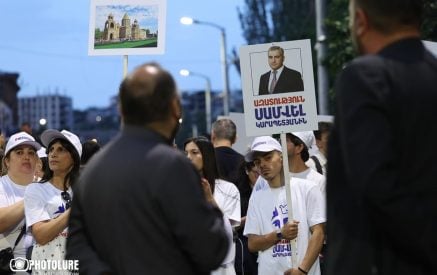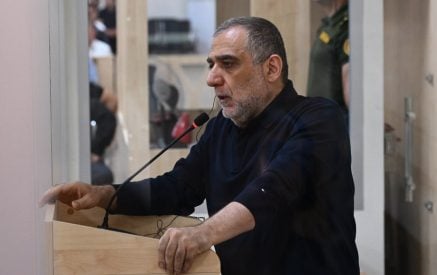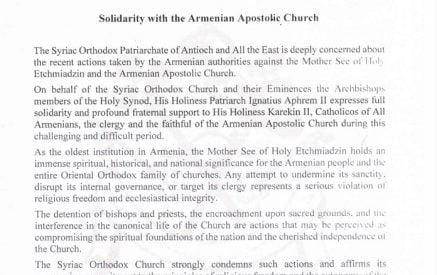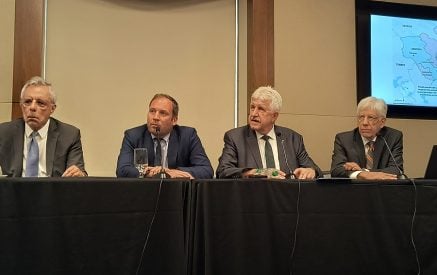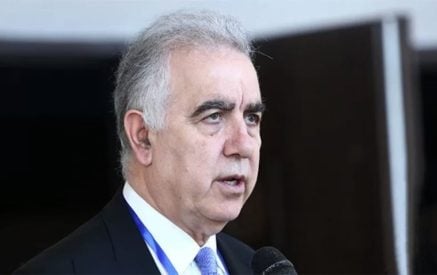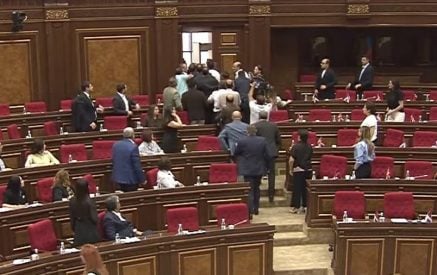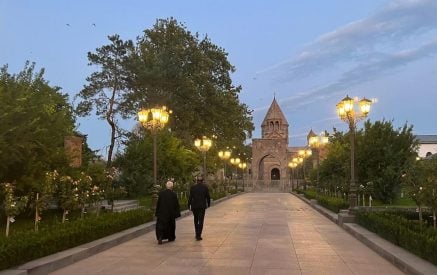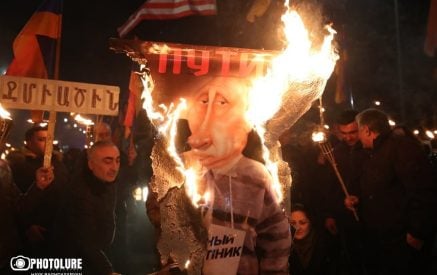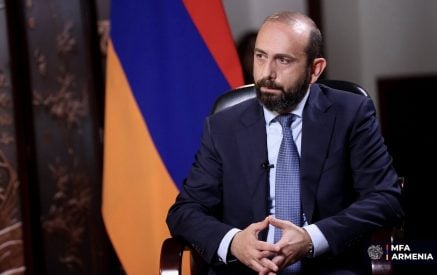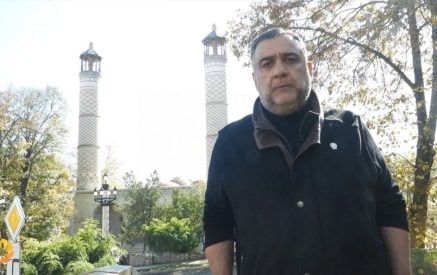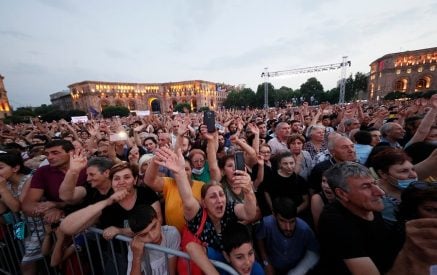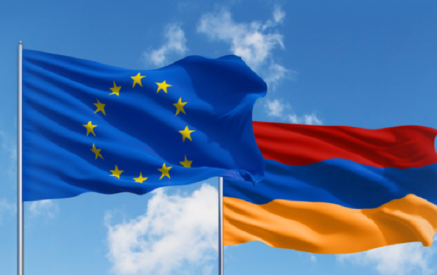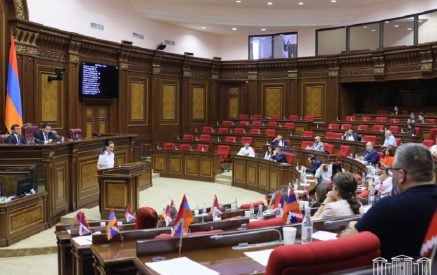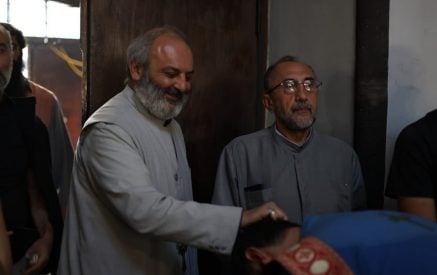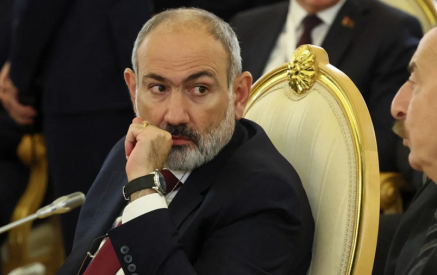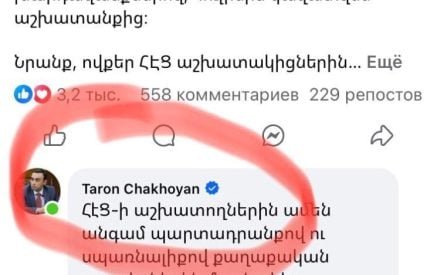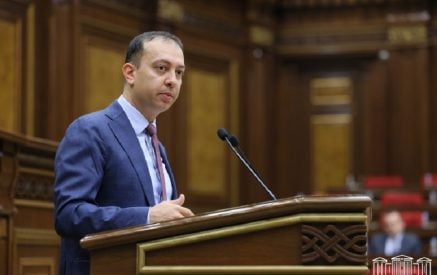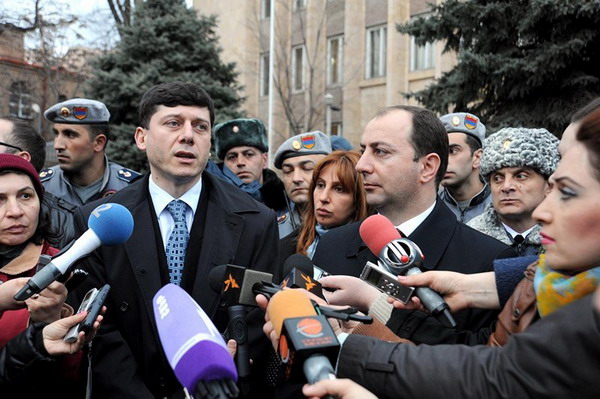An extract from the petition filed in the Constitutional Court by Raffi Hovhannisyan
“The lack of a system that would ensure restrictions on voting by another person (other persons) instead of persons who are absent from the Republic and have a right to participate in the election raises theoretical and practical doubts about the number of persons who participated in the vote. International observers confirm that, and the official results of the election also testify to that. According to those results, at the polling places and electoral districts, where the turnout was higher, one can say anomalously high, incumbent President Serzh Sargsyan won by an anomalous margin, which testifies to the fact that at all those polling places – and those are hundreds – there was absentee ballot vote fraud, ballot-box stuffing, carousel voting, the administrative resource was used, and many other means of breaching persons’ right to vote were used, as a result of which there are polling places, where the number of voters who ‘turned out’ to vote accounts for 100% of those included in the voter registration lists, there are much more polling places, where that number accounts for 90%-99%, there are even more polling places, where that number accounts for 80%-90%; polling places, where the number of those who ‘turned out’ to vote accounts for 60%-70% and 70%-80%, are hundreds. The OSCE ODIHR talked about the above-mentioned issue in its 3/2/2013 Post-Election Interim Report, asserting in particular: On 25 February, the CEC announced the final election results with Mr. Sargsyan as the elected president. An OSCE/ODIHR Election Observation Mission analysis of final results as published by the CEC shows a close correlation between the voter turnout and the number of votes for the incumbent, with Precinct Election Commissions with above average turnout also having a higher share of votes for Mr. Sargsyan. Out of the 1 988 polling stations, 1 746 have 300 or more registered voters (all but one of these polling stations are regular, i.e. not established in long-term pre-trial detention centers or medical facilities). In 144 of those, voter turnout exceeded 80 percent, which seems implausibly high; the incumbent received above 80 percent of the votes cast in 115 of these stations. In 198 out of the 303 stations where turnout was between 70 and 80 percent, the incumbent received more than 70 percent of the votes. Among 249 stations where turnout was below 50 percent, Mr. Sargsyan received more than 50 percent in 40, and Mr. Hovannisyan received more than 50 percent in 155. The tendency of higher results for the incumbent observed at the majority of stations with high turnout raises concerns regarding the confidence over the integrity of the electoral process.’ Both what we mentioned above and the quoted part of the OSCE ODIHR report refer to those included in the voter registration lists, and if we make a calculation based on the actual number of voters, at least, 11% should be added to those percentages, and that is according to the official data. So according to the Central Election Commission (CEC), the overall number of voters in the Republic of Armenia is 2 528 050, and the number of participants in the election is 1 521 489 [see www.elections.am]. According to the census data, as of October 12, 2011, 2 871 509 people lived in Armenia [www.armstat.am/eng]. Naturally, not all of them were citizens of the Republic of Armenia, but let’s assume that it is so. If we take into account the fact that according to the Migration Service, the number of emigrants from Armenia was 44 809 people in 2012, and in January 2013, that number was 7 002 [see www.smsmta.am/?id=937], then it turns out that 2 819 698 people live in the Republic. If we subtract 682 000 children under 18 years of age who don’t have a right to vote from 2 819 698 [see www.armstat.am], we will have 2 137 689 as the number of voters living in Armenia. Thus, according to the official data, the number of voters is 2 528 050, whereas there are 2 137 689 voters in Armenia, of which, according to the CEC data, 1 521 489 voters, which accounts for 60.18 percent of voters included in the register of voters, but actually accounts for 71.17 percent of voters living in the Republic, participated in the election. By the way, all this is based exceptionally on the official data. It means that if we want to find out what percentage of voters living in the Republic participated in the election, we have to add 11 percent to the percentage of the voter turnout at every polling place or electoral district. So the average percentage of the participants in the election in the Republic is 71.17 percent, which is an impossibly and unrealistically high number, and it is clear that this number is solely a result of ballot-box stuffing. Moreover, it turns out that at 235 polling places, 90%-100% or a higher percent, at 260 polling places, 80%-89%, at 88 polling places, 72%-79% of voters participated in the election. At those 586 polling places, 315 618 voters out of 368 776 voters who ‘turned out’ to vote or more than 85.59 percent cast their votes for Serzh Sargsyan. It is obvious that such numbers can be achieved solely by ballot-box stuffing, voter intimidation, and double-voting. So this is what our elections are like. Another calculation makes it clear that at the polling places, where the number of participants is close to the average, Raffi Hovhannisyan has an advantage. Under the conditions of this and other kinds of obvious fraud, the election commissions showed negligence. They didn’t initiate any recalculation at any polling place, rejected without consideration 128 complaints made by Raffi Hovhannisyan to declare those anomalous results void due to ballot-box stuffing and other kinds of fraud, didn’t record any encroachment on the electoral process themselves, didn’t investigate even those violations that had been recorded by the mass media, other candidates’ poll-watchers, NGOs, and observers. Naturally, all this doesn’t mean anything to the CEC and naturally, the CEC and Electoral District Commissions (EDC) didn’t initiate any recalculation at any polling place. Why naturally? Because Serzh Sargsyan admits in his letter addressed to Serj Tankian that he had organized the election; thus, what can we expect from the CEC and EDCs?”
P.S. I wonder is there anyone in the Republic who really believes that the official results made public by the CEC reflect the real picture of the people’s vote.
To be continued…
Read also
Karen MEZHLUMYAN
Attorney at Law





